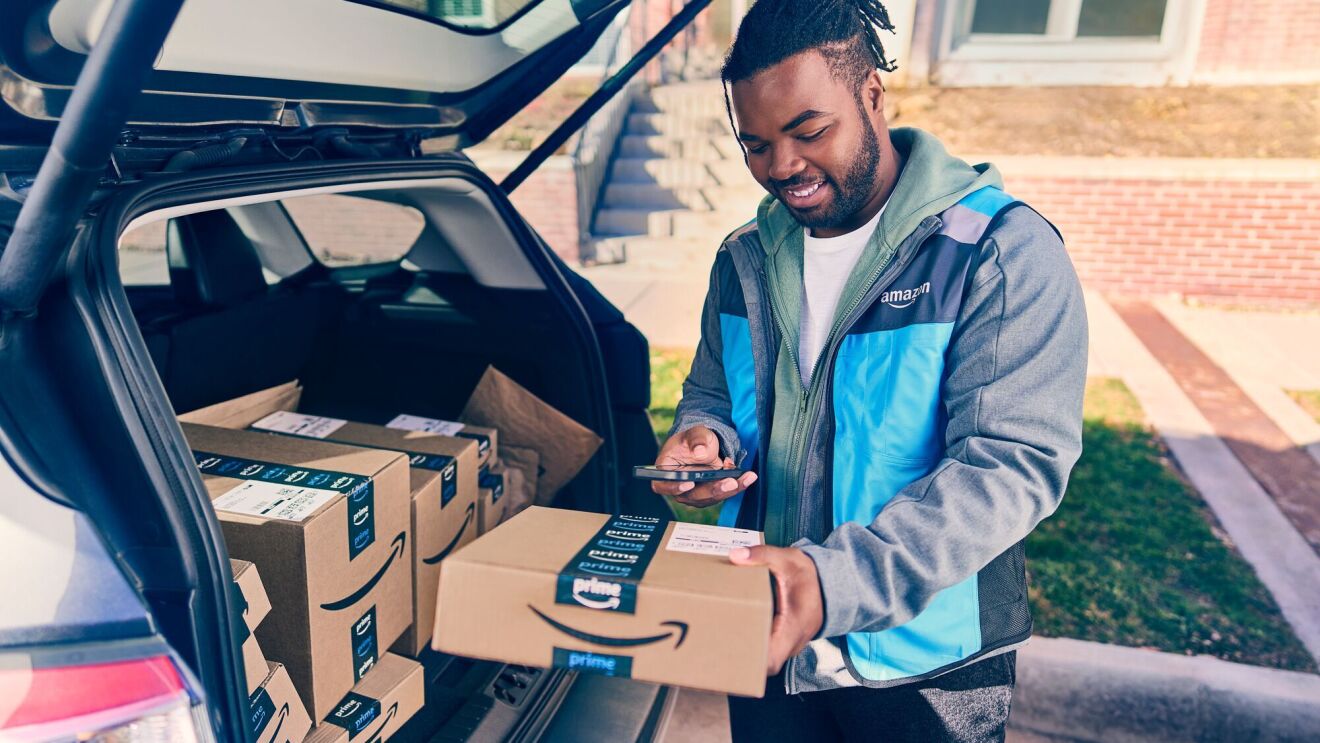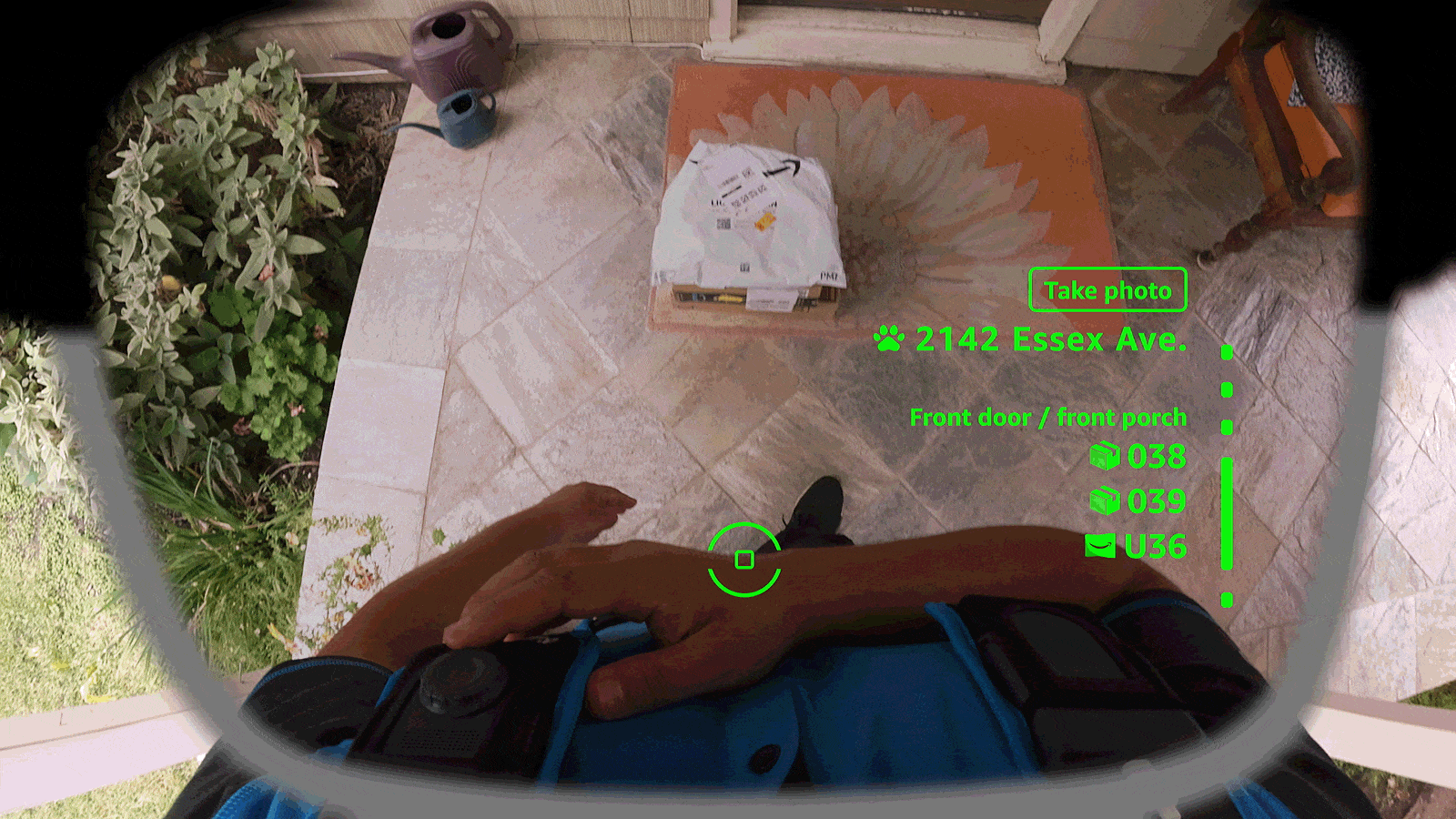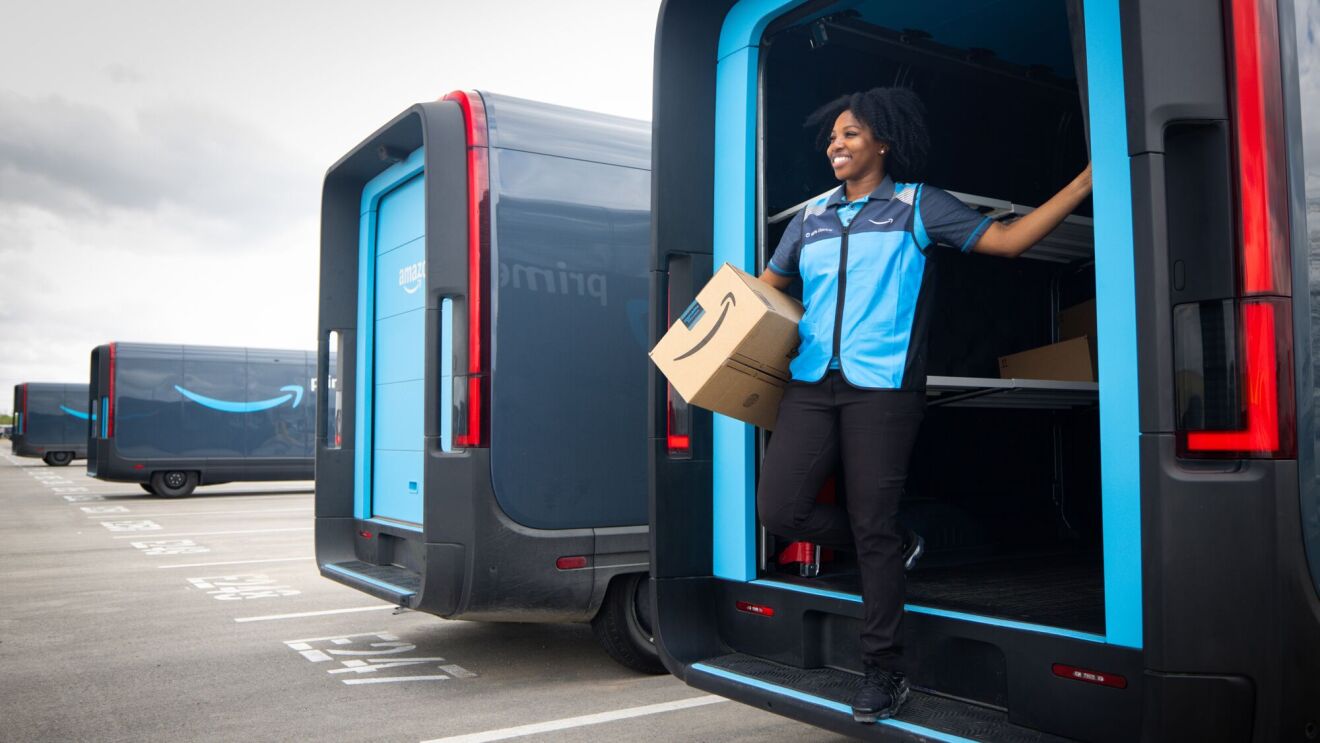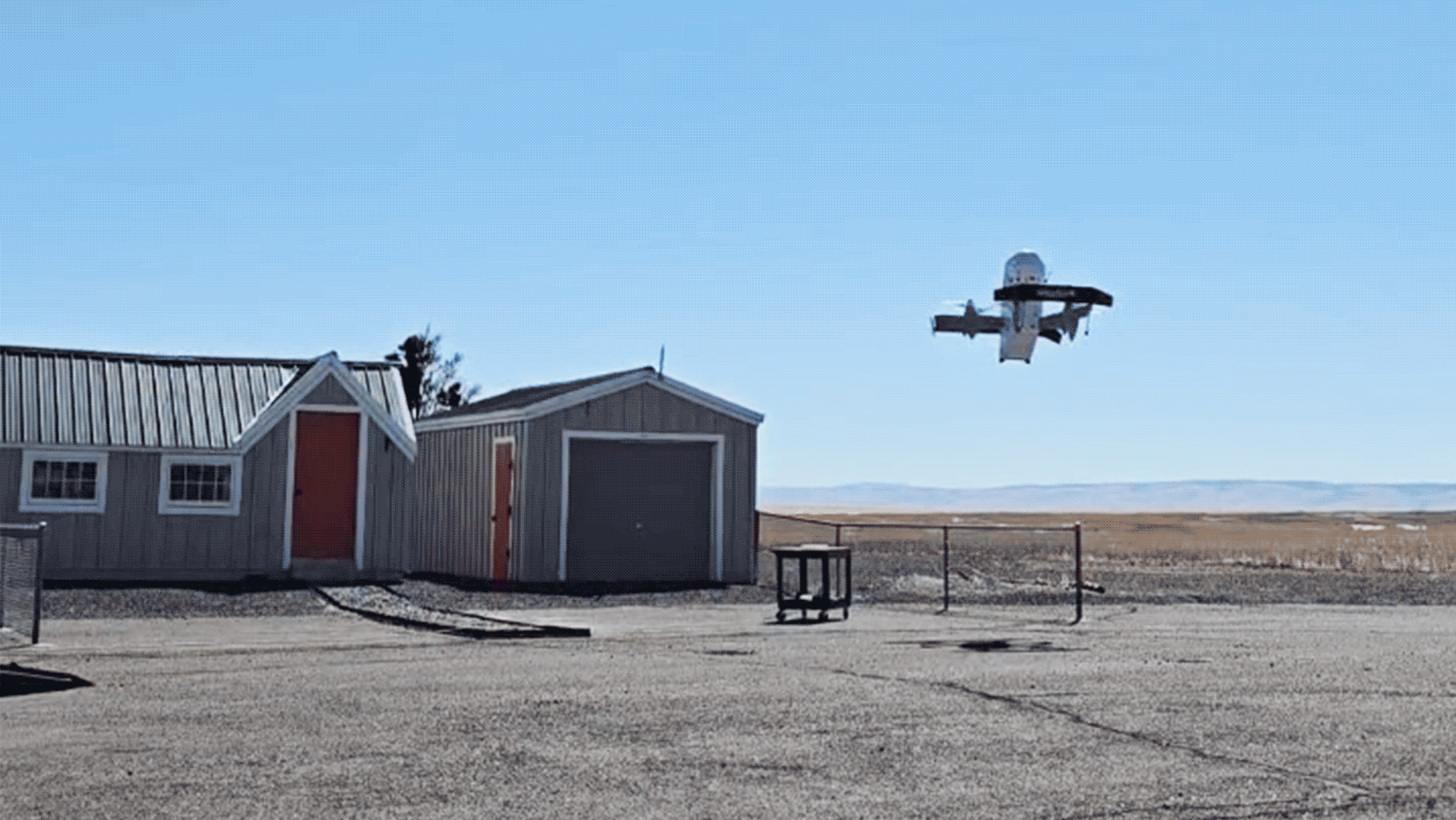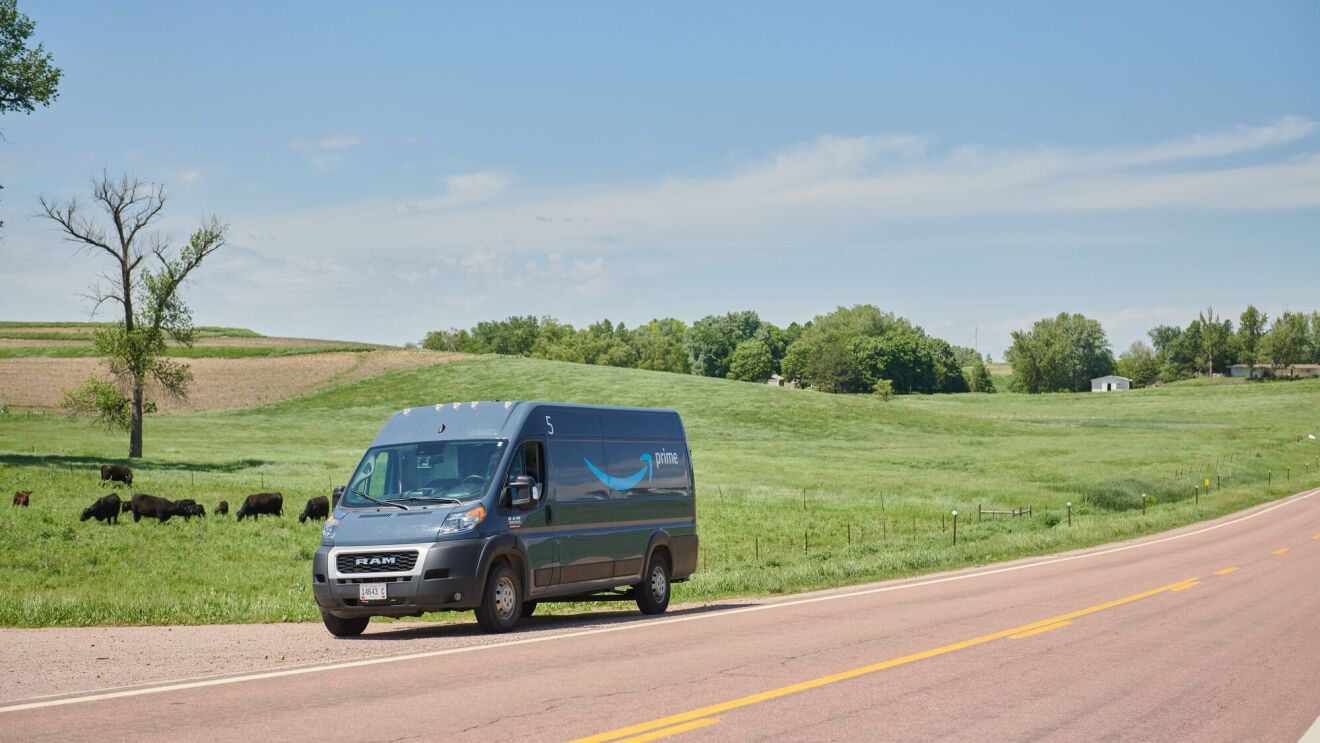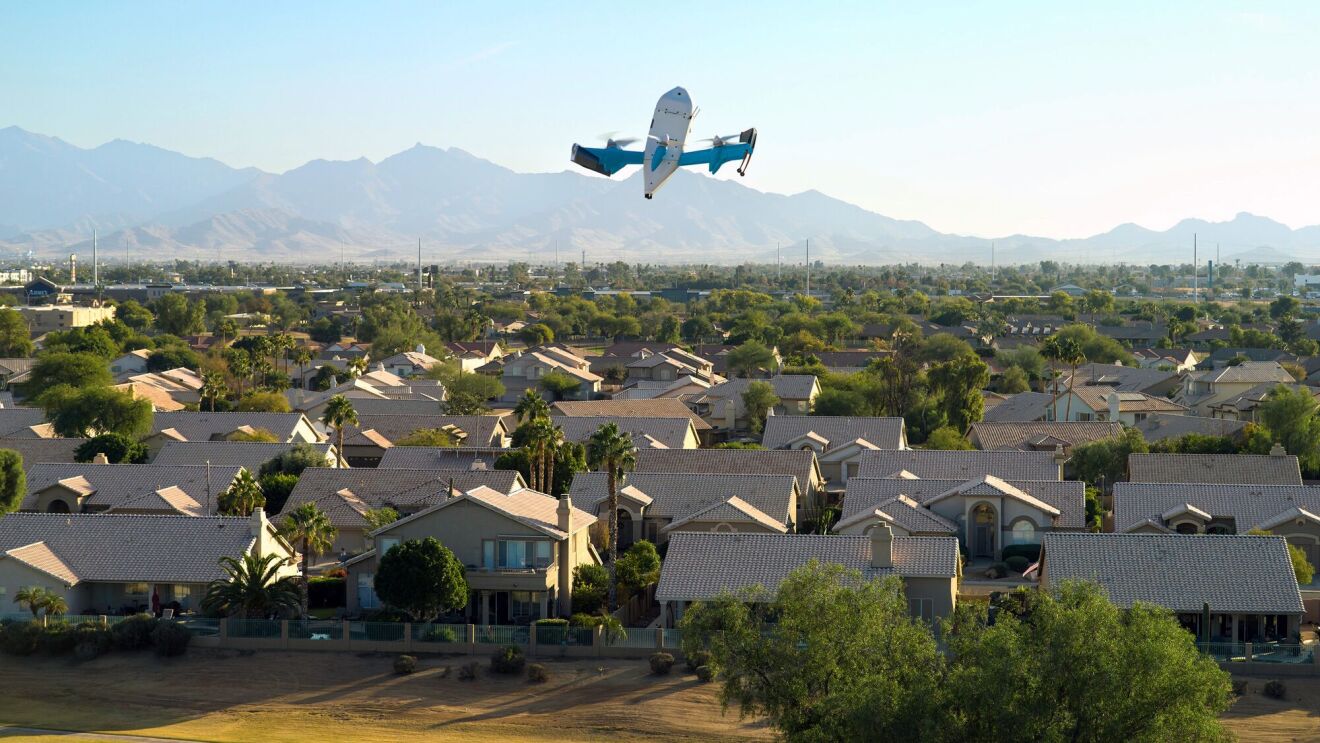Amazon’s new custom electric delivery vehicles from Rivian have started hitting the road across the United States, a step forward in Amazon’s efforts to achieve The Climate Pledge—to be net-zero carbon by 2040. To mark the milestone, Udit Madan, vice president of Amazon Transportation, asked Amazon CEO Andy Jassy and Rivian CEO RJ Scaringe about their thoughts on innovation, sustainability, and the role of companies in helping protect the planet.
Udit: RJ, can you tell us more about the fleet of Rivian vans that Amazon is rolling out across its network to deliver packages to customers?
RJ: This is an incredibly exciting day for both Rivian and Amazon. Hundreds of our custom Amazon delivery vans are officially on the road and making deliveries, thanks to years of close collaboration between our teams. To design a van that’s not only sustainable, but also safer and more comfortable, we immersed ourselves in the day-to-day activities of delivery drivers. The ridealongs were invaluable, and driver input led to numerous insights and hundreds of innovative ideas that we explored together.
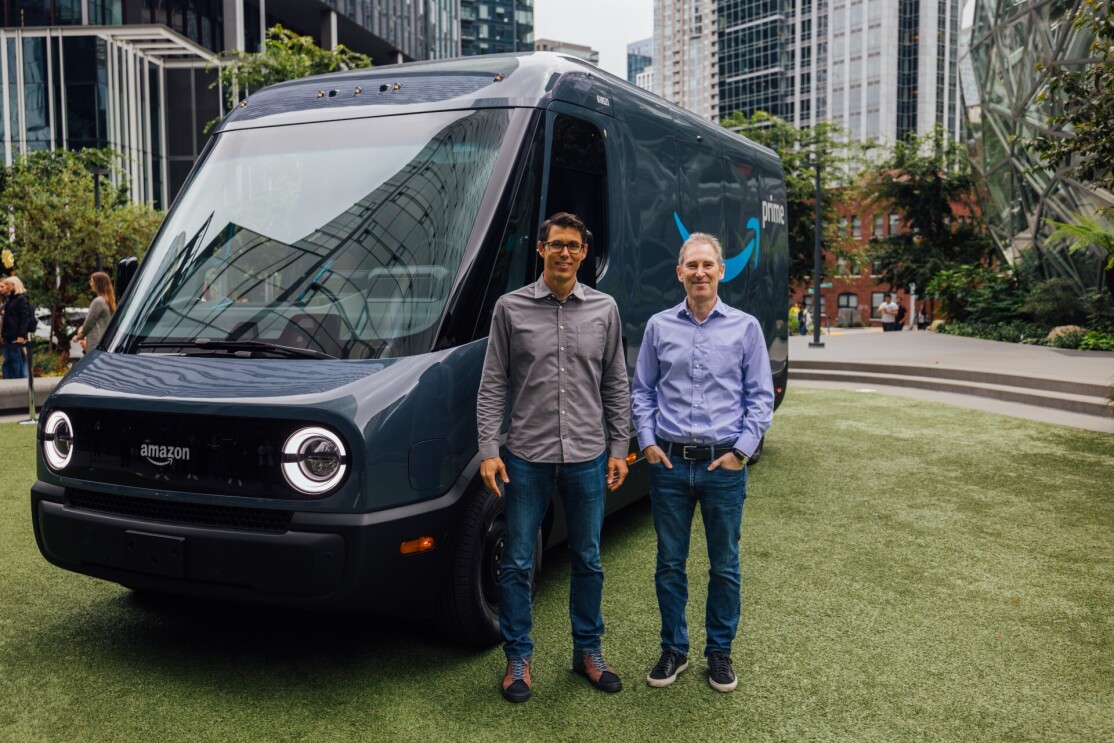 Rivian CEO RJ Scaringe and Amazon CEO Andy Jassy check out the electric delivery vehicle at Amazon's headquarters in Seattle.
Rivian CEO RJ Scaringe and Amazon CEO Andy Jassy check out the electric delivery vehicle at Amazon's headquarters in Seattle.The feedback and response from drivers so far has been extremely positive. The driver visibility, driving performance, ease of getting in and out, and the friendliness of the design—you can’t help but smile when you’re driving it, and that’s intentional. Our hope is that it also brings a smile to people’s faces when they see it coming down the road.
As we work toward getting 100,000 vans into neighborhoods across the country, we’ll continue to partner closely with Amazon and delivery drivers to make their jobs as safe, comfortable, and easy as possible.
Udit: Andy, how does this announcement fit into how you think about sustainability at Amazon?
Andy: First, I want to thank RJ and Rivian for the amazing work the team has done in getting us the first wave of electric delivery vehicles that Amazon drivers will use to get packages to customers. Through our testing program with Rivian, we’ve already delivered nearly half a million packages via electric vehicles, and we’re excited to step up the pace. We’ve heard very positive feedback from drivers and partners on the vehicles’ performance, features, safety, and functionality.
This is part of a much bigger initiative for us. We are committed to, and invested in, building a sustainable future for our employees, customers, and communities, and working with Rivian is an element of that. The bigger context is The Climate Pledge, which Amazon co-founded to encourage companies to reach net-zero carbon by 2040. There are now nearly 320 signatories, including HP, Pepsico, Procter & Gamble, and Visa. To meet this commitment, Amazon has been investing in solutions and technology that help us operate more sustainably, and I love seeing the team’s progress.
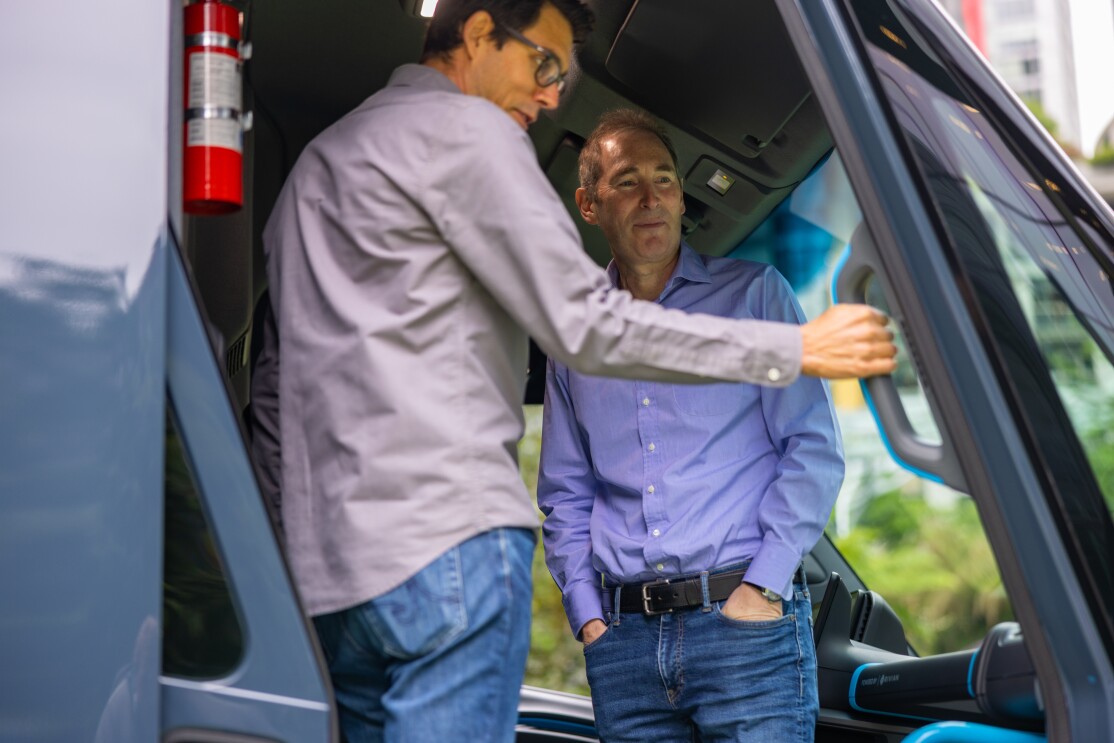
In addition to investing in an electric vehicle fleet to reduce carbon emissions, we’ve been the world’s largest corporate buyer of renewable energy for the past two years, and we are on a path to power our operations with 100% renewable energy by 2025. These investments, and others, aim to ensure that we operate in a more sustainable way for our customers and the planet.
We are directly taking on the big challenges that come with decarbonizing transportation and logistics, and fighting climate change, and we want to use what we learn to help other companies speed up similar efforts. That’s why we created The Climate Pledge Fund with $2 billion to invest in innovative companies that share in our sustainability mission. I’m so proud of our partnership with Rivian, which was one of the first recipients of our investments via The Climate Pledge Fund. The Fund also has invested in Turntide Technologies, which is developing efficient motors that reduce the energy that heating, ventilation, and air conditioning systems consume in buildings—and we’re piloting those motors in a number of our buildings, cutting down on electricity usage. And the Fund’s investment in BETA Technologies is helping to develop electric aircraft that can be used in cargo and logistics—which could help us advance our path to zero-emissions package delivery.
It’s exciting to see hundreds, and soon to be thousands, of our custom electric delivery vehicles making it out to the road. They will save millions of metric tons of carbon per year when we have all 100,000 on the road by 2030.
Udit: RJ, how does Rivian think about your own Climate Pledge commitment?
RJ: To build the kind of future our kids and our kids’ kids deserve, we must take extraordinary steps to stop the carbonization of our atmosphere and transition the world to sustainable energy. To do that rapidly and effectively, it has to be more than an individual effort. Climate change is a collective problem that requires collective action in order to transition the world toward renewable energy. The beauty of The Climate Pledge is it encourages companies to lock arms and create solutions that will protect our planet for generations to come. We were happy to be one of the first to sign on to maximize the positive impact we can have in the world. Since joining, it’s been exciting to see hundreds of others commit to taking steps to decarbonize their operations and create more sustainable products for consumers.
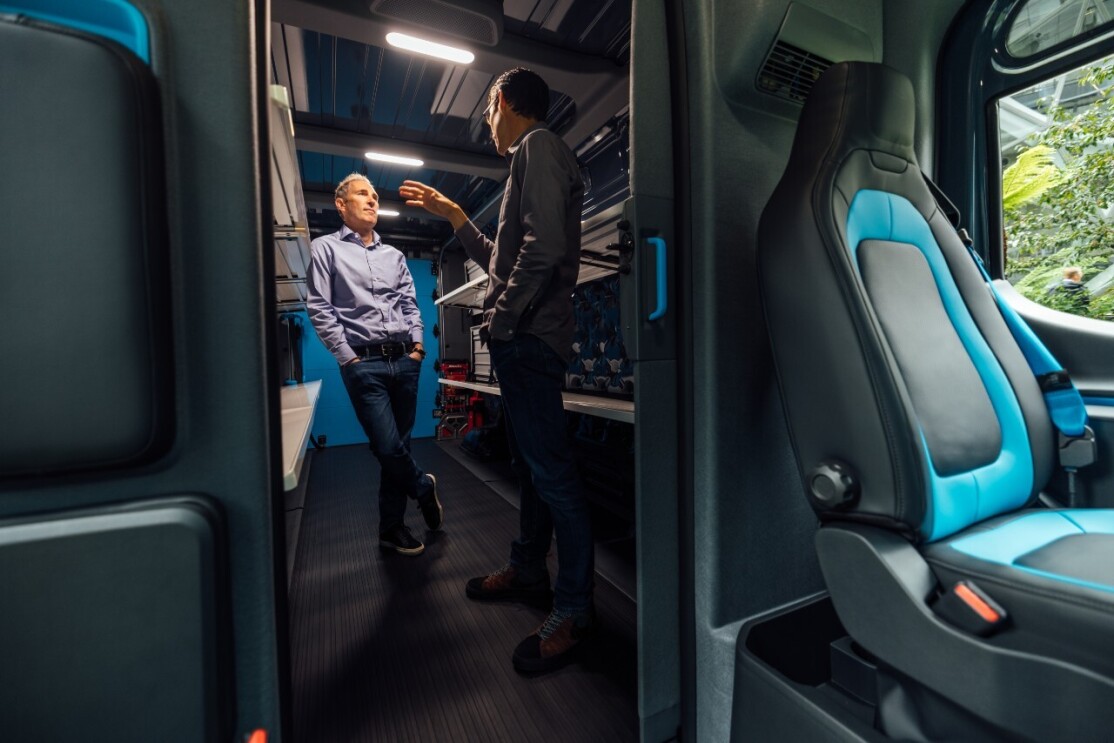
Electrifying transportation is key to dramatically reducing greenhouse gas emissions. The Climate Pledge Fund and its investment in Rivian, as well as our partnership with Amazon to electrify last mile delivery, is a meaningful step forward.
Udit: One thing I’ve appreciated about working with Rivian is that we’ve really collaborated as you’ve built our vans. RJ, how does Rivian view partnership with others as it strives to deliver on its mission?
RJ: Coming together is one of our values as a company, and as we’ve worked to get the electric delivery vans on the road, it’s been one of the best parts of the journey. Our teams were incredibly aligned, from the earliest whiteboard sketch, that we weren’t simply making an electric van, but rather, we were creating a product that was optimized for drivers. The feedback and multiple iteration loops that we went through during the many pilot deployments were invaluable for us as a team. I really believe these types of partnerships around aligned ambitious objectives are key to driving the change we need across many industries as we build the future of our planet.
Udit: Andy, what’s your view on the role of partnership in delivering on this new fleet of electric vans?
Andy: Our teams have worked together from sketch to design to scaling and deploying these vehicles. I really like how we designed the vehicles with a people-first mindset—in addition to safety, we also wanted to make them comfortable for drivers. It’s such a simple concept, but so important—every single delivery driver is different, and I love that our Rivian vehicles work for everyone. Tall drivers don’t need to duck to get inside, and anyone can reach the control buttons on the central display screen. Both companies really wanted the vehicle to be great for all the different builds of the people who need to operate them, and I’m appreciative of how the teams tested and thought this through to make that a reality.

We also considered the sound that the vans make. We didn’t want unnecessarily disruptive or harsh sounds that some delivery vehicles have today. Rivian worked with Amazon to define what the sound should be, and then we tested extensively with dozens of sound candidates in Seattle neighborhoods. What people will hear today is a mix of both a loud enough sound so a pedestrian on the street can hear it approaching, but not so loud that people would hear it at their doorstep or inside their house. This is a good example of how detail-oriented the teams were in creating this unique vehicle.
Udit: A lot of what Amazon prioritizes in our innovation is in regards to employee safety. We spend a lot of time thinking about that, and Rivian has taken it to the next level with these electric vehicles. RJ, can you explain Rivian’s focus on safety in developing these vans?
RJ: A core priority in developing the van was driver safety and comfort. Many of the most exciting features were the direct result of feedback and discussions with drivers. The design of the rear of the van is distinctive and features low-energy LED lighting to make it more visible to other drivers and pedestrians while making deliveries. To ensure optimal temperature while working inside the van, Rivian engineers spent a lot of time in the vans wearing Amazon delivery uniforms, which helped drive the design of the cooled seat. Some industry-leading preventative safety features include exterior cameras around the vehicle that are linked to a digital display inside the vans, giving drivers a 360-degree view outside the vehicle. The driver-assistance features are designed specifically to protect drivers and pedestrians—one example is an auto emergency braking feature that applies the brakes automatically if sensors determine a collision is imminent.
Beyond the van itself, I’m excited by the ecosystem we’ve built around it. Our teams have been able to think holistically about every aspect of operation, and I believe that will mean a lot to drivers. FleetOS, a system that uses advanced telematics to monitor the overall health of the van, is available to every Amazon delivery service partner and will help us continually improve on the safety and comfort of the vehicle.
Udit: Thank you both for your time. We’re thrilled that we’ve reached this milestone of the first vans hitting the road today. Rivian is an important partner for Amazon, and we are excited about how our work together is playing a critical role in helping protect the planet.
Learn more about Rivian, as well as Amazon’s partnership with the electric vehicle automaker and our sustainable transportation efforts.
Trending news and stories



